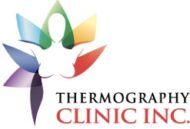The Mammogram Conundrum
Alexander Mostovoy, DHMS,BCCT Recently the US Department of Health dropped a bombshell on unsuspecting women in North America with the recommendation that 40-50 year olds need not have routine mammograms. They went on further to suggest that after the age of fifty, women should only have a mammogram once every two years instead of the previous recommendation of having a mammogram every year beginning at age 40. Citing a high prevalence of false positive test results along with anxiety and unnecessary invasive interventions such as biopsy and overtreatment. In addition, they made a secondary recommendation that Doctors not teach women BSE (Breast Self Examination). This announcement has created a huge controversy in the media and I would like to add a few other reasons why “routine” screening and the reliance on “one rule” applying to every woman is actually misleading and inappropriate. Unfortunately, women under the age of 50 often do get an aggressive form of cancer which would most benefit from early screening and detection; however, I do agree that mammograms are not the most effective method of screening women in this age group. Age aside, imagine a woman who does her annual mammogram screening and is told she is fine. She sighs with relief thinking that she dodged this bullet, and does not even need to think about her breasts until her next screening appointment, one year from now. The real problem is that breast cancer can be developing for up to 8-10 years before a palpable lump can be found or detected by mammography. In other words, this woman may actually have breast cancer, but it goes undetected because her lesion is too small to be seen by a mammogram or because her breasts are too dense to even have a reliable mammogram. Breast self examination is vital, especially since 70% of all breast lesions are found by women themselves. One of the most important things a woman can do for her breast health is to become comfortable with BSE. The use of one’s own hands is an excellent method for a woman to get to know what is normal in her own breast. Women need to become proactive and take control of their own health. Not just breast health, but overall health. The breasts are only one part of a woman’s anatomy and breast cancer is not a local problem, it is a systemic problem. |
One should consider breast thermography, a devise initially developed by the military to measure the infrared spectrum (heat). Over the past 40 years, this technology has been perfected and is used to detect heat in the breasts that is created when the body increases blood supply to feed abnormal cells in the breasts. Breast thermography is applicable to all women, especially the group between 40 and 50, and for those who have dense, fibrocystic breasts or implants. It is a completely safe, non-destructive screening method that has been proven to be effective.
The problem with routine mammography screening is that as long as the “screening” is negative, there is no need to do anything. Or is there? The current method of screening with mammography is solely based on negative or positive findings. Why wait and see, let’s do something about it while we can.
As a clinical thermographer and having read the images of over 20,000 women, I can say with no hesitation that breast thermography is a better predictor of breast health than any other imaging method. A medium or a high risk thermogram is an indicator of the physiological state of the breasts that can lead to structural issues. This enables women to have an early warning to any problems that may be developing. In other words, function or how a breast behaves will usually precede structure or anatomical changes. If your breast thermogram presents with high risk findings you can investigate further. It may be hormonal, it may be a lifestyle issue, it may be a dietary problem, or a myriad of other contributing factors. Let’s find out and deal with it. No need for anxiety, there is a need for action and a plan. No need to passively wait for another guideline from a panel of experts who know better than you what is best for you. Take action, listen to your own intuition and take charge of your own health because in the end, only you know what is best for you.
US Department of Health recommended Doctors not teach women BSE (Breast Self Examination)
Active Cancer Cells Can Double Every 90 Days
| Time | Number of Cells |
| 90 days | 2 |
| 1 year | 16 |
| 2 years | 256 |
| 3 years (Change detected with thermography) | 4,896 |
| 4 years | 65,536 |
| 5 years (Change still undetectable with mammogram) | 1,048,576 |
| 6 years | 16,777,216 |
| 7 years | 268,435,456 |
| 8 years (Cells doubled 32 times) | 4,294,967,296 |

